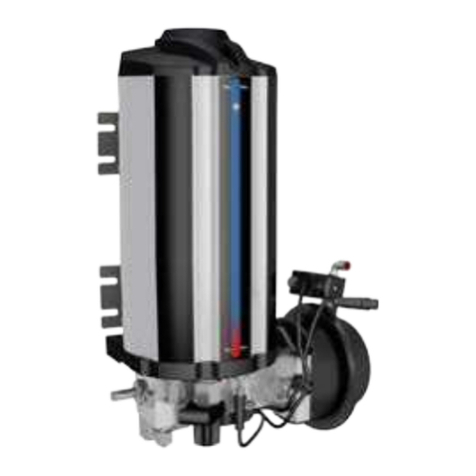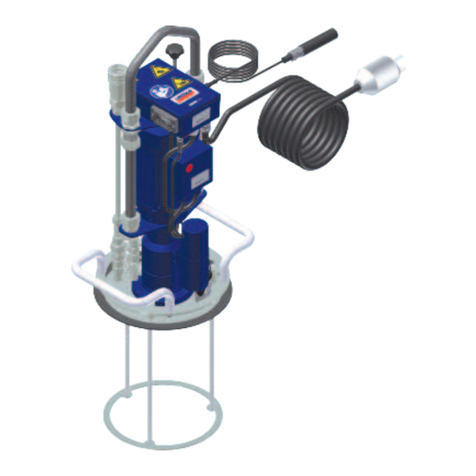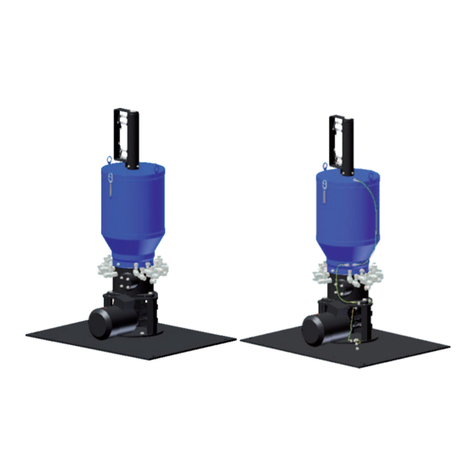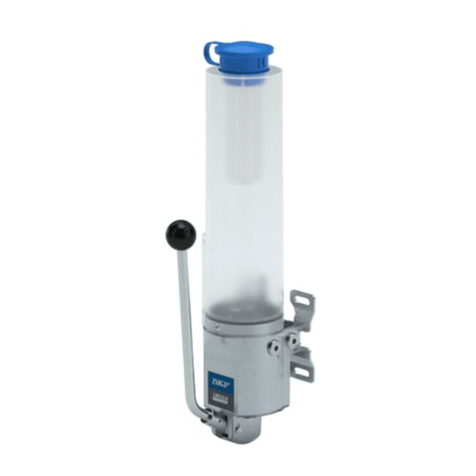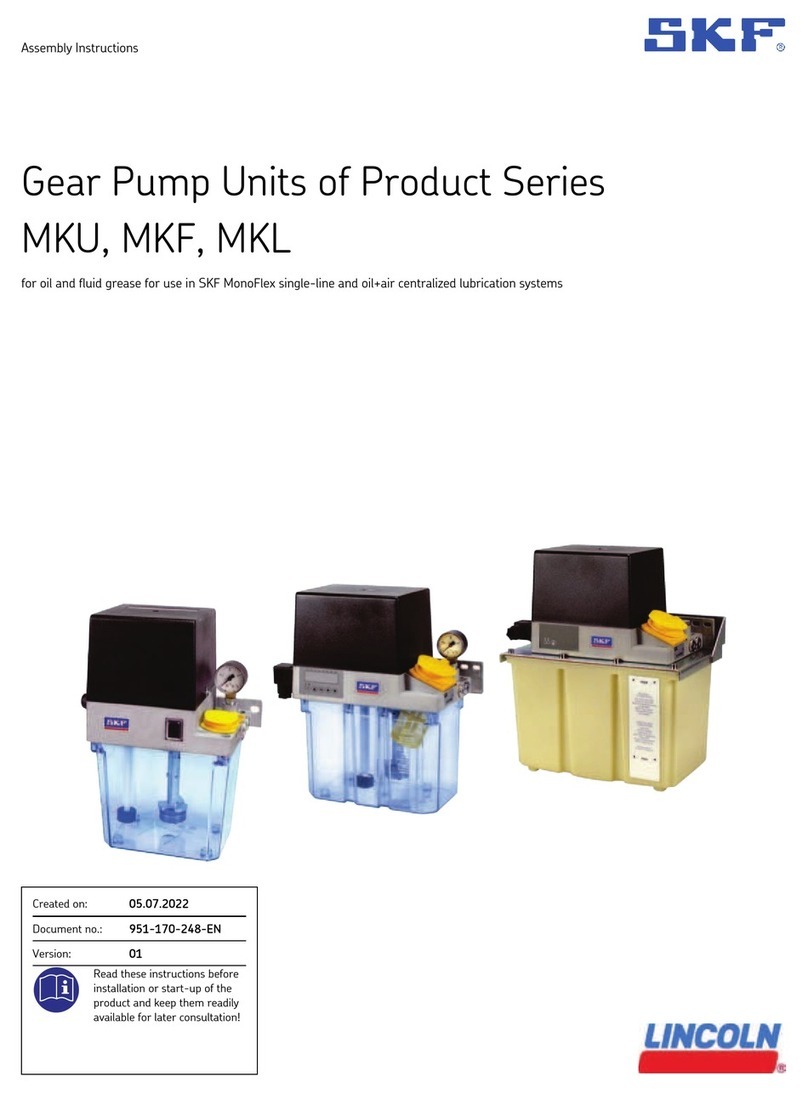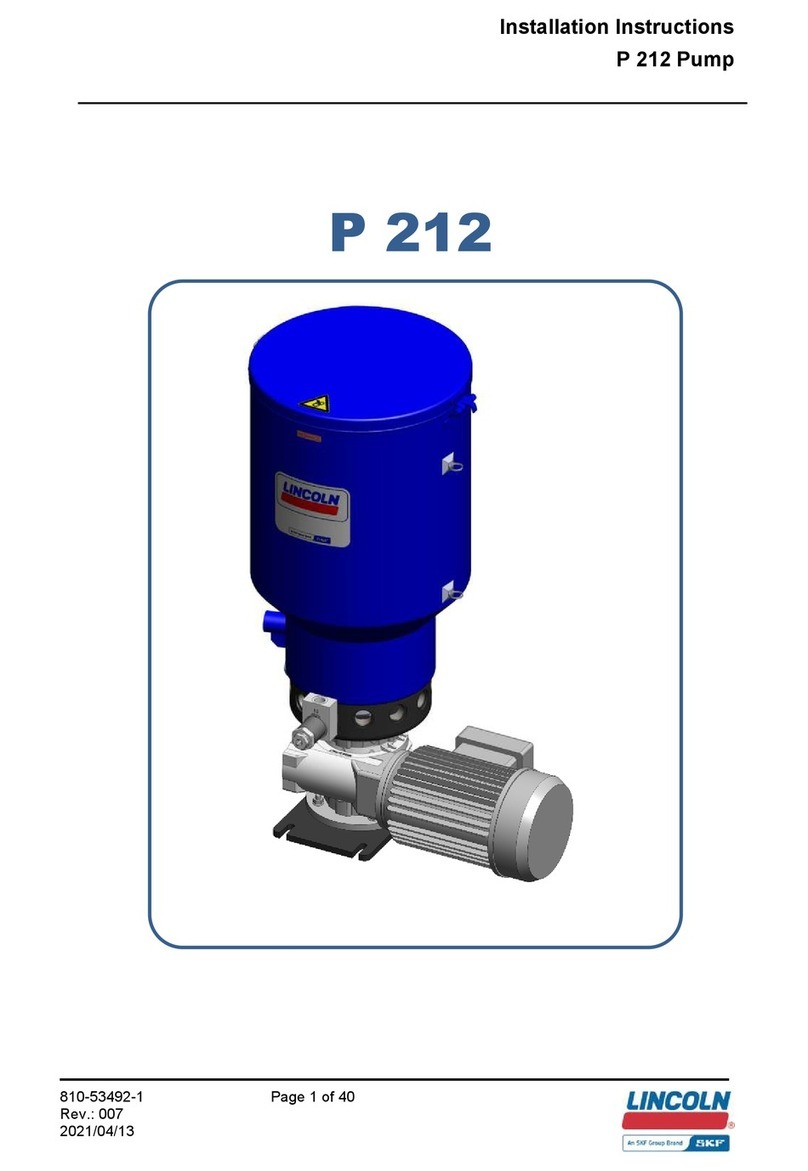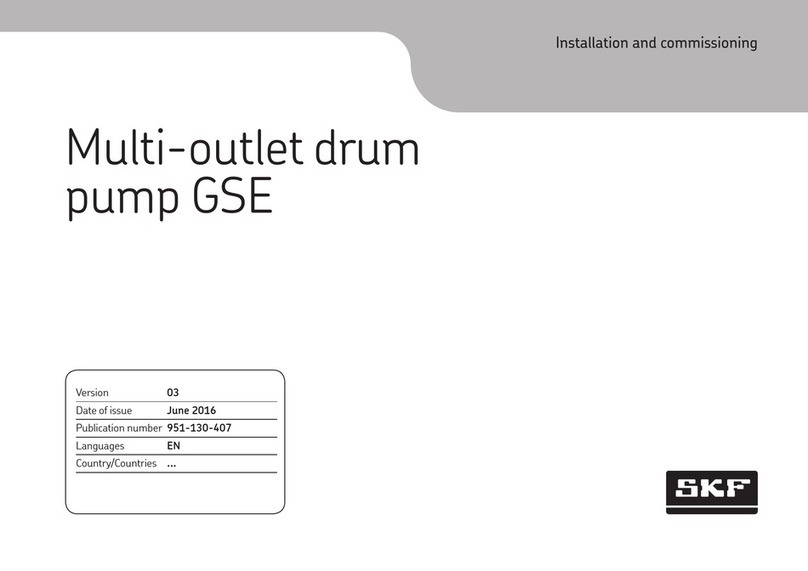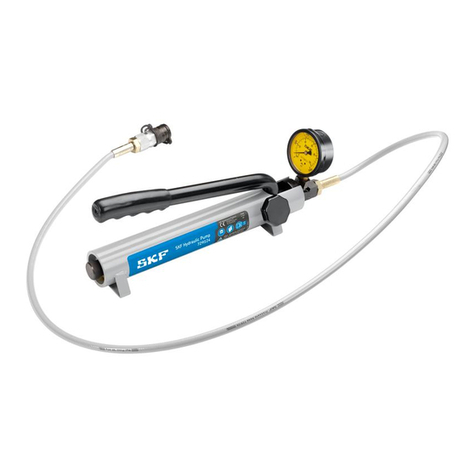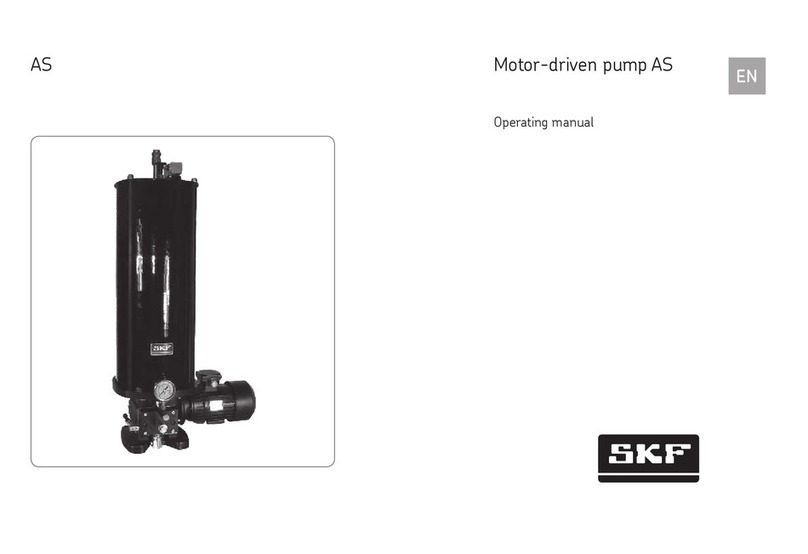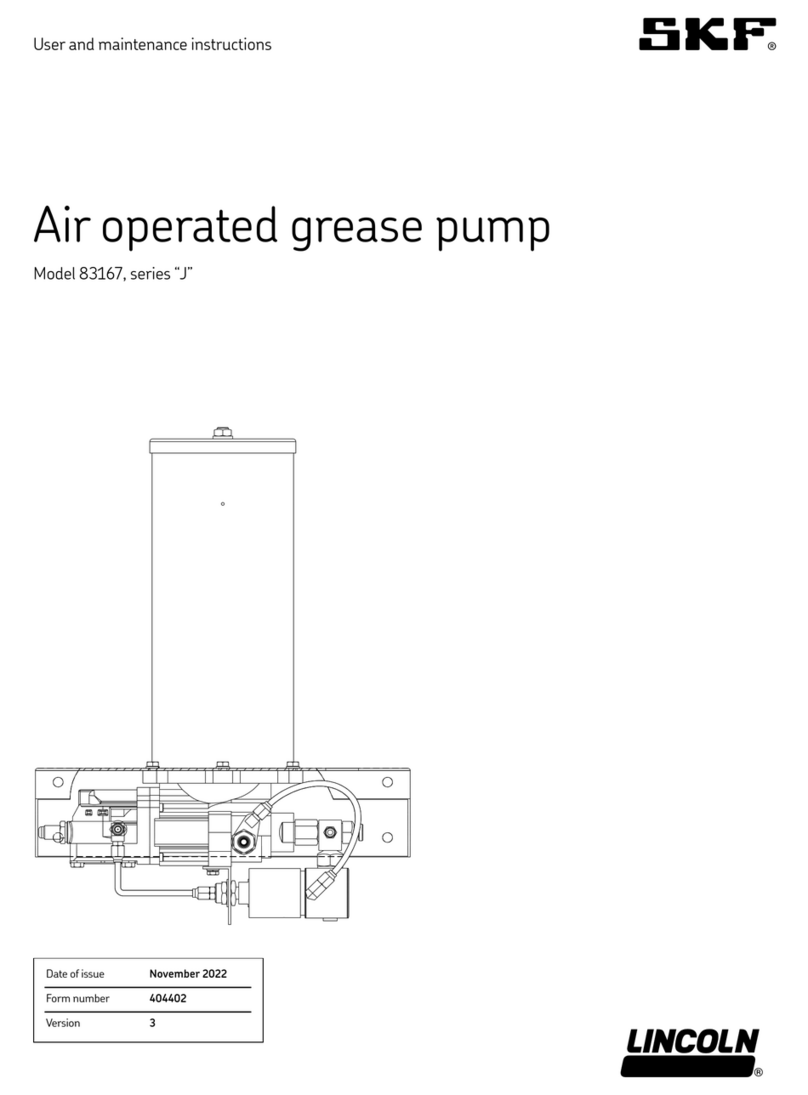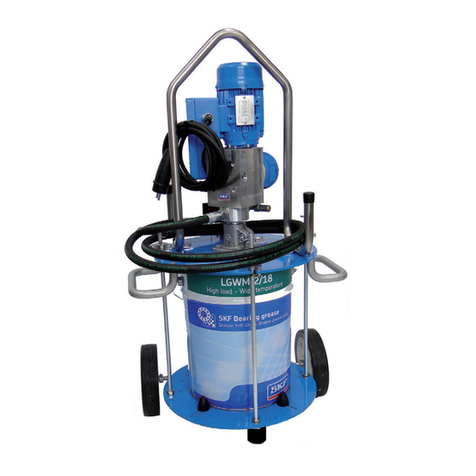
Foot valve body
Install o-ring () onto foot valve
body ().
Install ball (), spring () [small diam-
eter first], and washer () into foot
valve body.
Install pin () into foot valve.
. Make sure pin retains washer
properly and is flush with foot
valve body.
Clean and inspect
Clean all metal parts in cleaning solvent.
Solvent should be environmentally safe.
Inspect all parts for wear and/or damage.
. Replace as necessary.
Inspect air piston () for fatigue cracks.
. Replace as necessary.
Inspect rod () closely. Use a magnifying
glass to detect any score marks.
. Replace as necessary.
Closely inspect mating surfaces of all
check valve components for any imper-
fections. Ensure a smooth and clean
contact is obtained when assembled.
Example: place ball () into foot valve
body (). Fill foot valve body with sol-
vent. Make sure no leakage occurs.
Assembly
NOTE
Prior to assembly, certain components
require lubrication (→Table , page ).
Refer to Fig. (page ) for a section
view of pump tube.
NOTE
Inspect chamber of rod for damage.
Chamber should be smooth and not
rough. If rough and not smooth, rod ()
must be replaced.
Failure to inspect may result in dam-
age to seals.
Table
Lubricated components
Item Description
Clean oil
O -ring, 3/8in ID × 1/2in OD
Quad -ring, -5/8in ID × in OD
O -ring, -3/4in ID × in OD
Seal, -5/8in ID × -7/8in OD
Seal, -5/8in ID × in OD
O -ring, -3/8in ID × -1/2in OD
Block-V packing
O -ring, -1/4in ID × -7/16 in OD
O -ring, -1/8in ID × -5/16 in OD
Coat bore of air motor assembly with PTFE grease. )
) Part number is a . ounce (21.8 g) tube of PTFE grease.
Install o-ring () onto upper groove of
body ().
Install and seat seal () [heel end first]
into bottom of body.
Install and seat bearing () [small diam-
eter first] into body.
Install and seat seal () [heel end first]
into body.
Install and seat washer () into body.
Install retaining ring () into body.
Install o-ring () into groove of body.
Rod
Install o-ring () into groove of rod and
plug assembly ().
Install block-v packing () [lips upward]
onto short end of piston ().
Install piston assembly onto rod and plug
assembly.
. Use care not to damage o-ring.
Install ball () into rod and plug
assembly.


